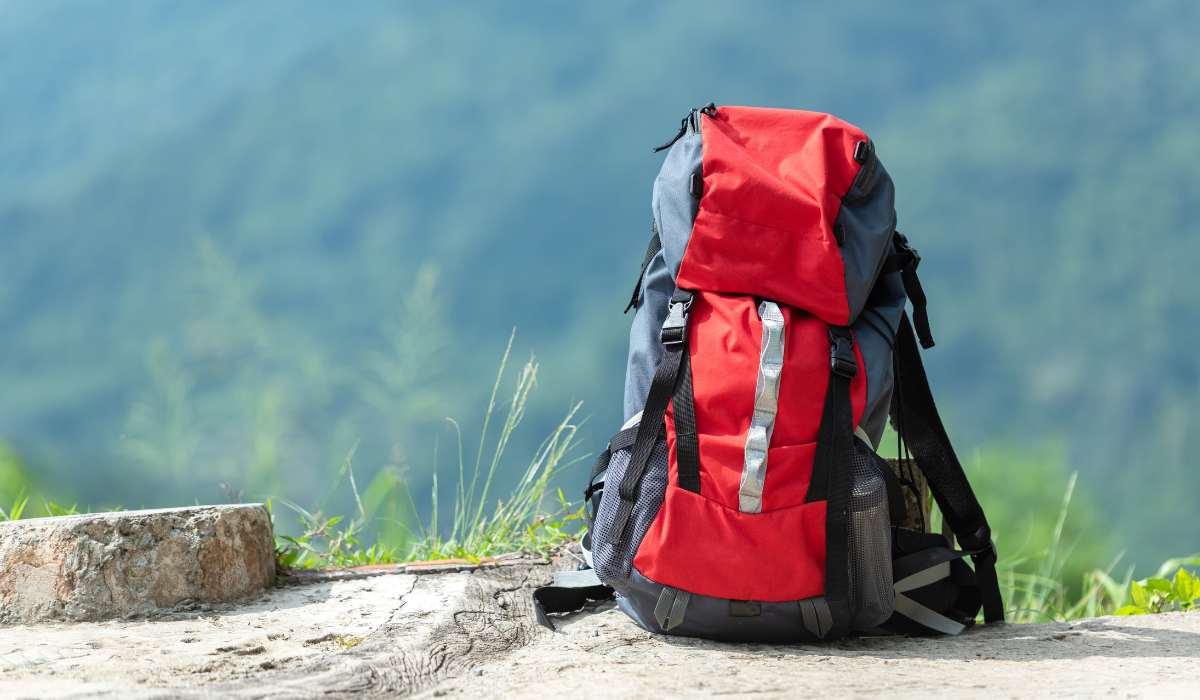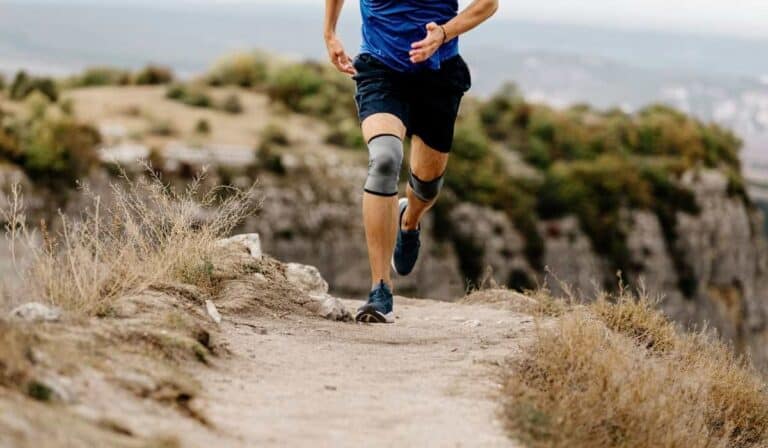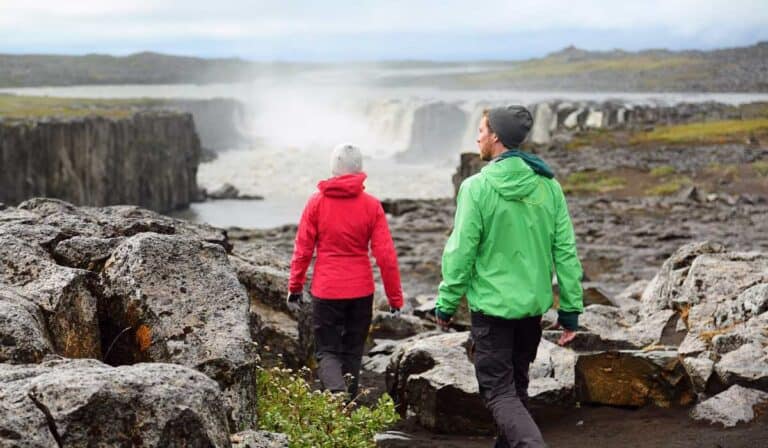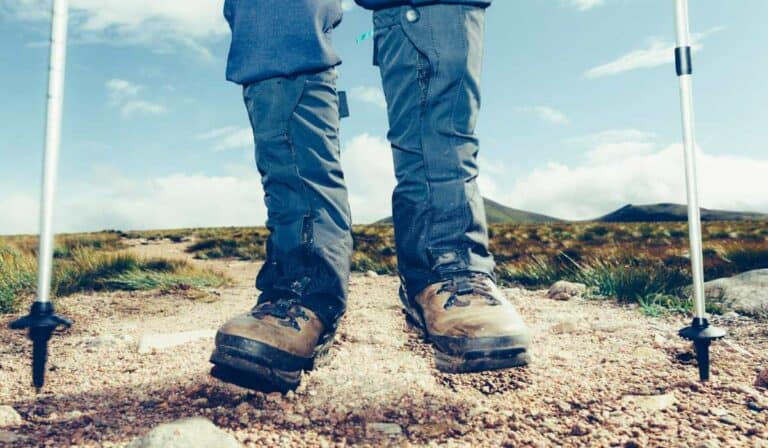Best Youth Hiking Backpacks Reviewed
Discovering the best youth hiking backpacks is essential for ensuring a comfortable and enjoyable outdoor adventure for your child. These specialized packs are designed to accommodate the unique needs of young hikers. In this post, we will delve into various aspects of selecting and using kids’ backpacking packs.
We’ll discuss the benefits of investing in a high-quality youth hiking backpack and explore key features to look for when making your purchase. Additionally, we’ll introduce some top brands known for producing reliable and durable backpacks suitable for both day hikes and overnight trips.
You’ll also learn how to properly care for your child’s new hiking gear as well as tips on packing their bag efficiently. Finally, we will touch upon crucial safety considerations to keep in mind while using these versatile bags on scouting trips or family outings alike.
Table of Contents
Choosing the Right Youth Hiking Backpack

Finding the perfect youth hiking backpack for your child can be a daunting task, especially with so many options available in the market. However, investing time and effort into selecting the best backpack will not only make their outdoor adventures more enjoyable but also help them develop a love for exploring nature. In this section, we’ll provide some helpful tips to guide you through choosing the best kids’ backpacking packs.
Taking Measurements: Torso Length and Hip Belt Size
The first step in finding an ideal hiking backpack is determining your child’s torso length and hip belt size. To measure torso length, have your child stand up straight while you locate their C7 vertebra (the bony bump at the base of their neck) and iliac crest (top of their hips). Measure the distance between these two points using a flexible tape measure or string. For hip belt size, simply wrap a measuring tape around their waist where they would wear a belt.
Considering Capacity: Day Hikes vs Overnight Trips
Youth hiking backpacks come in various sizes depending on whether they are designed for day hikes or overnight trips. For shorter outings like day hikes or scouting trips, consider smaller packs such as the REI Tarn 40 Pack. On the other hand, if your child plans to embark on longer journeys that require carrying heavy loads like camping gear and food supplies, opt for larger-capacity adult packs instead.
Adjustability: Shoulder Straps & Sternum Straps
- Shoulder straps: Look for adjustable shoulder straps that allow you to fine-tune the fit of the backpack. This ensures that your child can carry their load comfortably and securely.
- Sternum straps: These are essential for stabilizing the pack on your child’s back, preventing it from swaying side to side while they hike. Make sure these straps are adjustable as well so that they can be positioned correctly across their chest.
Pockets & Compartments: Keeping Gear Organized
A great youth hiking backpack should have multiple pockets and compartments to help keep gear organized during outdoor adventures. Look for features such as hip belt pockets, water bottle pockets, side pockets, and a spacious main compartment with easy access points. Organization is key, so make sure the backpack you choose has plenty of pockets and compartments to keep gear easily accessible.
Additional Features: Rain Cover & Hydration Compatibility
Lastly, consider additional features like a rain cover or hydration compatibility when choosing a youth hiking backpack. A rain cover is crucial in protecting your child’s belongings from getting wet during unexpected downpours while hydration compatibility allows them to easily access water bottles or reservoirs on the go without having to stop and unpack their bag.
Choosing the right youth hiking backpack is essential for a successful and safe outdoor adventure. Having the correct youth hiking rucksack is critical for an effective and safe outside outing, so it’s important to comprehend the advantages of getting one that suits your kid’s necessities flawlessly.
The Key Takeaway:
Choosing the right youth hiking backpack is crucial for your child’s outdoor adventures. Take measurements of their torso length and hip belt size, consider capacity based on trip duration, look for adjustable shoulder straps and sternum straps to ensure a comfortable fit, prioritize pockets and compartments for gear organization, and opt for additional features like rain covers or hydration compatibility.
Click here to read about Most Breathtaking Waterfall Hikes in Bend Oregon
Benefits of a Youth Hiking Backpack
Investing in a quality youth hiking backpack for your child has numerous advantages that can enhance their outdoor experience and make it more enjoyable. From promoting independence to ensuring comfort, let’s explore some of the key benefits:
Comfortable Fit
Youth hiking backpacks are specifically designed to cater to the unique body shape and sizes of children, as opposed to adult backpacks. They offer adjustable shoulder straps, hip belts, and sternum straps that ensure a perfect fit while distributing weight evenly across your child’s back.
Encourages Independence
Hiking with their own backpack allows kids to carry essential items like water bottles, snacks, or extra clothing themselves instead of relying on adults. This sense of responsibility fosters independence and boosts self-confidence during day hikes or overnight trips.
Keeps Gear Organized
Quality youth hiking backpacks come with multiple compartments such as the main compartment, side pockets for water bottles, and hip belt pockets for easy access items like sunscreen or lip balm. This helps keep gear organized and easily accessible during scouting trips or other outdoor adventures.
Durability & Longevity
- Durable Materials: High-quality materials used in manufacturing these packs ensure they withstand rough usage by active kids without tearing or wearing out quickly.
- Rain Cover: Many youth hiking backpack models include rain covers that protect the contents from getting wet during unexpected showers.
- Long-lasting: With proper care, a good-quality youth hiking backpack can last for years and be passed down to younger siblings or friends as your child grows.
Suitable for Various Activities
A youth hiking backpack is a great choice for multiple activities, from camping and fishing to school trips, offering ample capacity for the comfortable carrying of heavy loads. The large backpack capacity allows kids to carry heavy loads comfortably during their adventures.
In essence, investing in a quality youth hiking backpack ensures that your child has an enjoyable and comfortable experience while exploring the great outdoors. So go ahead and choose the perfect package from our list of top-rated kids’ backpacking packs, keeping in mind their specific needs and preferences.
Having the right backpack for your child’s hike can make a world of difference in terms of comfort and convenience. With that being said, let us now explore some features to look out for when selecting a youth hiking backpack.
The Key Takeaway:
Investing in a quality youth hiking backpack for your child has numerous advantages, including promoting independence and ensuring comfort. These packs come with adjustable straps to fit the unique body shape of children, multiple compartments to keep gear organized, and durable materials that can last for years. A versatile youth hiking backpack is suitable not only for hiking but also for other outdoor activities like camping or fishing.
Features to Look For in a Youth Hiking Backpack

Searching for the ideal youth hiking backpack for your youngster can be an exhilarating and satisfying experience, as it will help them relish their outside escapades even more. There are several features that you should consider when shopping for kids’ backpacking packs to ensure they have comfortable and functional bags for their day hikes or overnight trips.
Torso Length Adjustment
A key feature of any good youth hiking backpack is its ability to adjust according to your child’s torso length. This ensures the pack fits snugly on their back without causing discomfort or strain during long hikes. Many quality adult packs offer this feature, but it’s essential for children who are still growing rapidly.
Hip Belt Pockets & Water Bottle Pockets
Having easy access to essentials like snacks and water bottles is crucial during outdoor activities, so look for hip belt pockets and side pockets designed specifically for holding these items securely in place while keeping them within reach. REI offers some helpful tips on adjusting fit here.
Main Compartment Accessibility & Organization
- Main compartment: A large main compartment with ample space is necessary for carrying heavy loads such as clothing, food, and camping gear on scouting trips or longer outings.
- Organization: Multiple compartments help keep gear organized by separating different types of items into specific areas within the pack.
- Rain cover: An integrated rain cover protects your child’s belongings from getting wet during unexpected showers while out exploring nature trails or mountainsides.
Click here to read about What To Wear For Hiking In Summer
Comfort & Support
A comfortable and supportive youth hiking backpack is essential for keeping your child happy on the trail. Look for packs with padded shoulder straps, adjustable sternum straps, and hip belts that help distribute weight evenly across the body. Outdoor Gear Lab provides a list of top-rated kids’ backpacks here.
Durability & Material Quality
Investing in a durable and high-quality youth hiking backpack will ensure it lasts through multiple adventures as your child grows. Look for materials like ripstop nylon or polyester that can withstand wear and tear from outdoor activities while remaining lightweight enough to not add unnecessary burden during hikes.
Ultralight Options
If you’re looking to minimize the overall weight of your child’s pack, consider exploring ultralight backpack options made with lighter materials without sacrificing durability or functionality. This can make all the difference when carrying heavy loads over long distances on challenging trails.
When searching for a youth hiking rucksack, factors like heaviness, ease, and storage space should be taken into account. Moving on from this topic, the next heading will discuss some of the best brands available when looking for a quality youth hiking backpack.
The Key Takeaway:
When looking for the best youth hiking backpacks, it’s important to consider features such as torso length adjustment, hip belt and water bottle pockets, main compartment accessibility and organization, comfort and support, durability, and material quality. Additionally, ultralight options can be considered if minimizing weight is a priority. Investing in a high-quality backpack will ensure that your child has a comfortable experience during their outdoor adventures.
Best Brands for Youth Hiking Backpacks
Making an informed choice of a youth hiking backpack can be difficult, with the many brands and options available. To help you make an informed decision, we have compiled a list of some of the top brands offering quality kids’ backpacking packs that are designed to cater to your child’s needs during day hikes or overnight trips.
- Osprey: Known for its durable and comfortable adult backpacks, Osprey also offers excellent youth hiking backpacks. Their ultralight packs come with adjustable torso lengths, hip belts, sternum straps, and shoulder straps to ensure a perfect fit for growing children.
- Deuter: Deuter is another reputable brand that designs high-quality large backpacks specifically tailored for young adventurers. They feature spacious main compartments with multiple side pockets and water bottle pockets to keep gear organized on scouting trips or family outings.
- REI Tarn 40 Pack: The REI Tarn 40 pack is a popular choice for parents looking to invest in a reliable youth hiking backpack. It boasts adjustable torso lengths, hip belt pockets, and even includes a rain cover to protect your child’s belongings during unexpected showers.
- Gregory: Gregory offers an array of kids’ backpacking packs designed to carry heavy loads comfortably. With features like padded shoulder straps, sternum straps, and hip belts, these backpacks ensure that your child can focus on enjoying their outdoor adventure without any discomfort.
- Kelty: Kelty is another brand worth considering when shopping for youth hiking backpacks. Their packs are designed with comfort in mind and come equipped with multiple compartments to keep gear organized during day hikes or overnight trips.
When picking the ideal brand for your kid’s necessities, it is essential to think about aspects such as sturdiness, solace, capacity, and adaptability. By investing in a quality youth hiking backpack from one of these top brands mentioned above, you’ll be setting up your young explorer for success on their next outdoor adventure.
When looking for the perfect youth hiking backpack, there are many aspects to take into account. With proper care and maintenance, your backpack can last for years and make a great investment in outdoor adventures. Next up is learning how to properly care for your youth hiking backpack so that you get the most out of its use.
The Key Takeaway:
This section highlights the best brands for youth hiking backpacks, including Osprey, Deuter, REI Tarn 40 Pack, Gregory, and Kelty. These top brands offer durable and comfortable backpacks with adjustable features to ensure a perfect fit for growing children. By investing in a quality youth hiking backpack from one of these top brands, parents can set their young explorers up for success on their next outdoor adventure.
How to Care for Your Youth Hiking Backpack

Taking proper care of your child’s youth hiking backpack is essential to ensure its longevity and maintain its functionality. This section will give you guidance on how to look after and keep your kid’s hiking backpack in top condition.
Cleaning the Backpack
After a day hike or an overnight trip, it is important to clean the backpack thoroughly. Dirt, sweat, and other debris can accumulate over time and affect the performance of the bag. To clean the backpack:
- Empty all compartments and shake out any loose dirt.
- Gently brush off any visible dirt using a soft-bristled brush or cloth.
- If necessary, use a mild soap solution (avoid detergents) mixed with water to spot-clean stubborn stains by gently scrubbing with a sponge or cloth.
- Rinse well with cold water if you used soap solution; otherwise, just wipe down with a damp cloth.
- Air dry completely before storing away – never use heat sources like hairdryers as they may damage fabric materials in adult packs as well as kids’ ones.
Maintaining Zippers
Zippers are often overlooked but play an essential role in keeping gear organized within the main compartment of large backpacks such as ultralight models too. To keep zippers functioning smoothly:
- Regularly check for debris caught in zipper teeth that might cause them not to close correctly.
- Lubricate zippers occasionally using silicone-based lubricants designed specifically for outdoor equipment. REI suggests using a pencil to apply graphite on zipper teeth as an alternative lubricant.
- Avoid overloading side pockets or hip belt pockets, which can strain zippers and lead to damage.
Click here to read about Discover the Best Leash for Hiking with Dogs
Inspecting Straps and Buckles
Regularly inspect shoulder straps, sternum straps, and hip belts for signs of wear or damage. Ensure buckles are functioning correctly and replace any broken ones immediately. To maintain the perfect fit of your child’s youth hiking backpack:
- Tighten all adjustable straps before each use.
- Avoid excessive pulling or yanking on straps when adjusting them.
- Store the backpack with all straps loosened to prevent unnecessary stress on materials during storage.
Rain Cover Care
If your child’s hiking backpack comes with a rain cover, it is important to care for it properly as well:
- Always dry out completely after exposure to wet weather conditions to ensure longevity and effectiveness in protecting against the elements.
- Fold and store in a compact manner when not in use to avoid creasing and tearing of the fabric material.
- Check periodically for holes or rips and repair them with a patch if necessary to continue providing adequate protection for gear inside the main compartment of adult packs and kids alike.
Caring for your child’s youth hiking backpack will help preserve its functionality while also ensuring that they have a comfortable experience during their outdoor adventures. By following these simple tips, you can extend the life of your favorite pack so they can enjoy many more scouting trips in nature.
By taking the time to properly care for your youth hiking backpack, you can ensure that it will last through many outdoor adventures. To get the most out of your child’s youth hiking backpack, be sure to pack it correctly with our next heading: Tips for Packing Your Child’s Youth Hiking Backpack.
The Key Takeaway:
To ensure the longevity and functionality of your child’s youth hiking backpack, it is important to clean it after every use, regularly inspect straps and buckles for wear or damage, maintain zippers by checking for debris caught in zipper teeth and lubricating them occasionally using silicone-based lubricants. Additionally, care should be taken with rain covers by drying them out completely after exposure to wet weather conditions and storing them in a compact manner when not in use.
6 Tips for Packing Your Child’s Youth Hiking Backpack
Packing your child’s youth hiking backpack efficiently is essential to ensure they have a comfortable and enjoyable outdoor adventure. Here are some tips on how to pack their backpack effectively, keeping in mind the importance of weight distribution and easy access to frequently used items.
A. Distribute Weight Evenly
To prevent strain on your child’s back and shoulders, it is crucial to distribute the weight evenly throughout their hiking backpack. Place heavier items such as food supplies, camping gear, or extra clothing towards the middle of the main compartment and close to their back. Lighter items like sleeping bags can be placed at the bottom while medium-weight items should be positioned around these heavy objects.
B. Utilize Compartments & Pockets
Youth hiking backpacks come with various compartments that help keep your child’s gear organized during day hikes or overnight trips. Make use of hip belt pockets for small essentials like snacks or sunscreen; water bottle pockets on side panels for quick hydration access; and external zippered pockets for maps, compasses, or other navigational tools.
C. Roll Clothing Items
Rolled clothes take up less space than folded ones in large backpacks – this packing technique also helps reduce wrinkles. Teach your kids how to roll shirts, pants, and jackets before placing them into separate compartments within their backpacks.
D. Use Compression Sacks & Dry Bags
- Compression sacks: These handy accessories compress bulky clothing articles (like fleece jackets) down into more manageable sizes so they fit better inside your child’s backpack.
- Dry bags: To keep clothes and gear dry during wet conditions, consider using waterproof dry bags. They come in various sizes and are perfect for storing items that need to stay dry, such as electronics or extra clothing layers.
E. Keep Safety Items Accessible
Ensure safety essentials like a whistle, first aid kit, headlamp, or flashlight are easily accessible in case of emergencies while exploring the great outdoors with your young adventurer. Store these items within external pockets or attach them securely to shoulder straps using carabiners if needed.
F. Teach Your Child How to Pack Their Backpack
Involve your kids in the packing process so they learn how to properly pack their own hiking backpacks for future scouting trips and outdoor adventures. This will help instill responsibility and independence while ensuring they know where each item is stored within their packs.
By taking the time to properly pack your child’s youth hiking backpack, you can ensure that they are comfortable and safe on their hike. To further increase safety, it is important to consider some additional safety considerations when using a youth hiking backpack.
The Key Takeaway:
To pack a youth hiking backpack efficiently, it is important to distribute weight evenly and utilize compartments and pockets. Rolling clothes instead of folding them saves space, while compression sacks and dry bags can help manage bulky items and keep gear dry. Safety essentials should be easily accessible, and involving children in the packing process instills responsibility and independence.
Click here to read about Best Toddler Hiking Shoes for Tiny Explorers
Safety Considerations When Using a Youth Hiking Backpack

When going on a trek with your young one, safeguarding should always be the highest priority. A well-fitted and properly packed youth hiking backpack can make all the difference in ensuring their comfort and security while exploring nature’s wonders. Here are some essential safety considerations to keep in mind when using a youth hiking backpack:
A. Proper Fit
The perfect fit is crucial for preventing discomfort or injury during day hikes or overnight trips. Ensure that the shoulder straps, hip belt, and sternum straps are adjusted in a way to evenly spreads out the load across your kid’s frame.
B. Weight Distribution
To avoid strain on your child’s back and shoulders, it is important to pack heavier items closer to their spine within the main compartment of their kids’ backpacking packs. This will help maintain balance while they carry heavy loads through various terrains.
C. Hydration Access
Ensuring easy access to water bottles or hydration systems is key for staying hydrated during long treks outdoors—especially in hot weather conditions. Look for large backpacks with side pockets or dedicated hydration compartments.
D. Visibility & Weather Protection
- Rain cover: Many quality ultralight backpacks come equipped with rain covers that protect gear from getting wet during unexpected downpours.
- Bright colors: Opt for a youth hiking backpack in bright colors or with reflective accents to increase visibility, especially during low-light conditions.
E. First Aid & Emergency Preparedness
Always pack a first aid kit and other essential emergency items such as a whistle, flashlight, and extra layers of clothing in easily accessible compartments of your child’s backpacking backpacks. Ensure your child is equipped with the necessary supplies to handle any potential issues that could arise during their outdoor excursions.
F. Supervision & Communication
Last but not least, always keep an eye on your child while they explore the great outdoors—especially if it is their first time using hiking backpacks or participating in scouting trips. Establish clear communication methods and educate them about potential hazards they might encounter along the way.
Taking these safety considerations into account when using a youth hiking backpack can help create enjoyable experiences filled with fun memories while exploring planet Earth.
The Key Takeaway:
To ensure your child’s comfort and safety during outdoor adventures, it is important to choose a youth hiking backpack that fits properly and distributes weight evenly. Other considerations include hydration access, visibility in low-light conditions, emergency preparedness, and clear communication methods between parent and child. Always monitor your little ones while they take in the wonders of nature.
FAQs about Best Youth Hiking Backpacks
What Size Backpack for an 8-Year-Old Hiking?
An appropriate backpack size for an 8-year-old would be around 18-30 liters, depending on the child’s height and the duration of the hike. It is essential to choose a backpack that fits comfortably and distributes weight evenly. Make sure to test different sizes before making a purchase.
What Are the Specifications for Good Hiking Backpacks?
A good hiking backpack should have adjustable shoulder straps, a hip belt, a sternum strap, durable material (such as nylon or polyester), water resistance, multiple compartments for organization, hydration compatibility, and adequate ventilation. Additionally, consider factors like capacity based on trip length and personal preferences.
What Size Backpack for Hiking for Kids?
The ideal size of a kid’s hiking backpack depends on their age and height. Generally speaking, ages 4-7 years require 10-20 liter packs; ages 8-12 years need 18-30 liter packs; teenagers can use adult-sized packs ranging from 40+ liters depending on trip length. Always prioritize comfort when selecting a pack.
What Is the Difference Between Gregory Wander 50 and Osprey Ace 50?
The main differences between Gregory Wander & Osprey Ace, are both being popular youth-specific bags with similar capacities (50L), including design features such as suspension systems & adjustability options. The Gregory Wander has Versafit Suspension System while Osprey Ace features the AirScape back panel. Both offer adjustable torso lengths, but Osprey Ace has a slightly wider range of adjustment.
Conclusion
In conclusion, choosing the right youth hiking backpack is essential for a comfortable and safe outdoor experience. The benefits of a youth hiking backpack include proper weight distribution, organization, and durability. Features to look for in a youth hiking backpack include shoulder straps, hip belts with pockets, water bottle pockets, side pockets, and rain covers.
The best brands for youth hiking backpacks are REI Tarn 40 Pack and Ultralight Backpacks. To care for your child’s youth hiking backpack you should clean it regularly and store it properly when not in use. When packing the bag make sure to distribute weight evenly throughout the main compartment.







